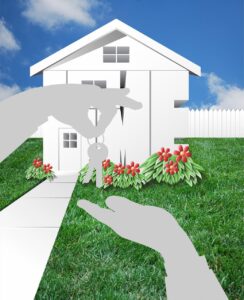How to Determine the Best Time to Buy or Sell a Home
The real estate market is constantly changing, making it crucial for buyers and sellers to understand when the best time is to make a move. Whether you’re looking to purchase your dream home or list your property among the available Stayner real estate listings for sale, knowing market trends and seasonal fluctuations can help you make the most informed decision. Let’s explore the factors that influence timing in the housing market.
Understanding the Real Estate Market Cycles
Real estate markets operate in cycles, typically consisting of four phases: recovery, expansion, hyper-supply, and recession. Recognizing these cycles can provide valuable insights into the best times to buy or sell a home.
-
Recovery Phase: This period follows a downturn, with slow price growth and fewer listings. It’s a good time for buyers seeking lower-priced properties.
-
Expansion Phase: Demand increases, prices rise, and new developments emerge. Sellers benefit during this phase as home values climb.
-
Hyper-Supply Phase: More homes enter the market, leading to increased competition. Buyers may find better deals, but sellers may need to price competitively.
-
Recession Phase: Market activity slows, prices decline, and fewer transactions occur. Investors often capitalize on this phase to acquire properties at lower costs.
Seasonal Trends in Real Estate
Real estate markets fluctuate based on the time of year, affecting both home prices and buyer demand.
Spring: Peak Buying and Selling Season
Spring is traditionally the busiest time in real estate. Warmer weather, longer days, and tax refunds contribute to increased buyer activity. Home prices tend to rise due to strong demand, making it an ideal time for sellers. If you plan to sell, listing in spring often results in faster sales and competitive offers.
Summer: High Activity with Family Moves
Summer remains active, particularly for families looking to move before the new school year. Inventory levels are still high, and competition among buyers continues. However, the market may begin to slow toward late summer as vacations and back-to-school preparations take precedence.
Fall: A Balanced Market
Fall is a transition period where motivated buyers and sellers remain active, but overall market activity slows. Prices may become more negotiable, presenting opportunities for buyers. Sellers can still benefit from serious buyers, but staging and pricing strategies become even more critical.
Winter: Slower Market with Potential Deals
Winter is typically the slowest season for real estate. Fewer listings and lower buyer demand can lead to price reductions. However, buyers who remain active during this period often face less competition, making it an advantageous time to negotiate a deal. Sellers willing to list in winter may attract serious buyers who are ready to move quickly.
Economic Factors That Influence the Market
Beyond seasonal trends, several economic factors impact real estate timing.
Interest Rates and Mortgage Availability
Interest rates play a significant role in home affordability. Lower rates encourage borrowing, increasing buyer demand. Higher rates, on the other hand, may deter buyers, reducing home prices. Monitoring interest rate trends can help determine whether it’s a good time to buy or sell.
Employment and Economic Stability
A strong job market and economic growth typically drive real estate activity. When employment rates are high, more people feel confident about making large financial commitments like purchasing a home. Conversely, economic downturns may slow buyer demand, leading to price adjustments.
Housing Inventory and Market Conditions
The balance between supply and demand affects home prices and market conditions. A seller’s market occurs when demand outpaces supply, leading to higher prices and faster sales. A buyer’s market, on the other hand, happens when supply exceeds demand, giving buyers more negotiation power and lower prices.
Local Market Considerations
Real estate is highly localized, meaning national trends may not always reflect what’s happening in your area. Factors such as new developments, school district ratings, local job markets, and neighborhood desirability can all influence buying and selling trends.
If you’re considering buying or selling in Stayner, analyzing Stayner real estate listings for sale and consulting a local real estate professional can provide insight into current market conditions.
Personal Factors to Consider
While market trends are important, personal circumstances also play a key role in determining the best time to buy or sell.
-
Financial Readiness: Ensure you have a stable income, a good credit score, and sufficient savings for a down payment or moving costs.
-
Lifestyle Changes: Marriage, a growing family, downsizing, or career changes can all impact when you need to move.
-
Future Plans: If you plan to stay in a home for several years, market fluctuations become less significant compared to short-term investments.
Conclusion: Timing Is Key, but Preparation Is Crucial
Deciding when to buy or sell a home involves analyzing market trends, economic conditions, and personal factors. While spring and summer often present the highest activity, fall and winter can offer unique opportunities for buyers and sellers who are flexible and prepared.
Whether you’re exploring Stayner real estate listings for sale or planning to list your property, staying informed and working with a knowledgeable real estate professional will help you navigate the market successfully. With the right strategy and timing, you can make the most of your real estate transaction.


